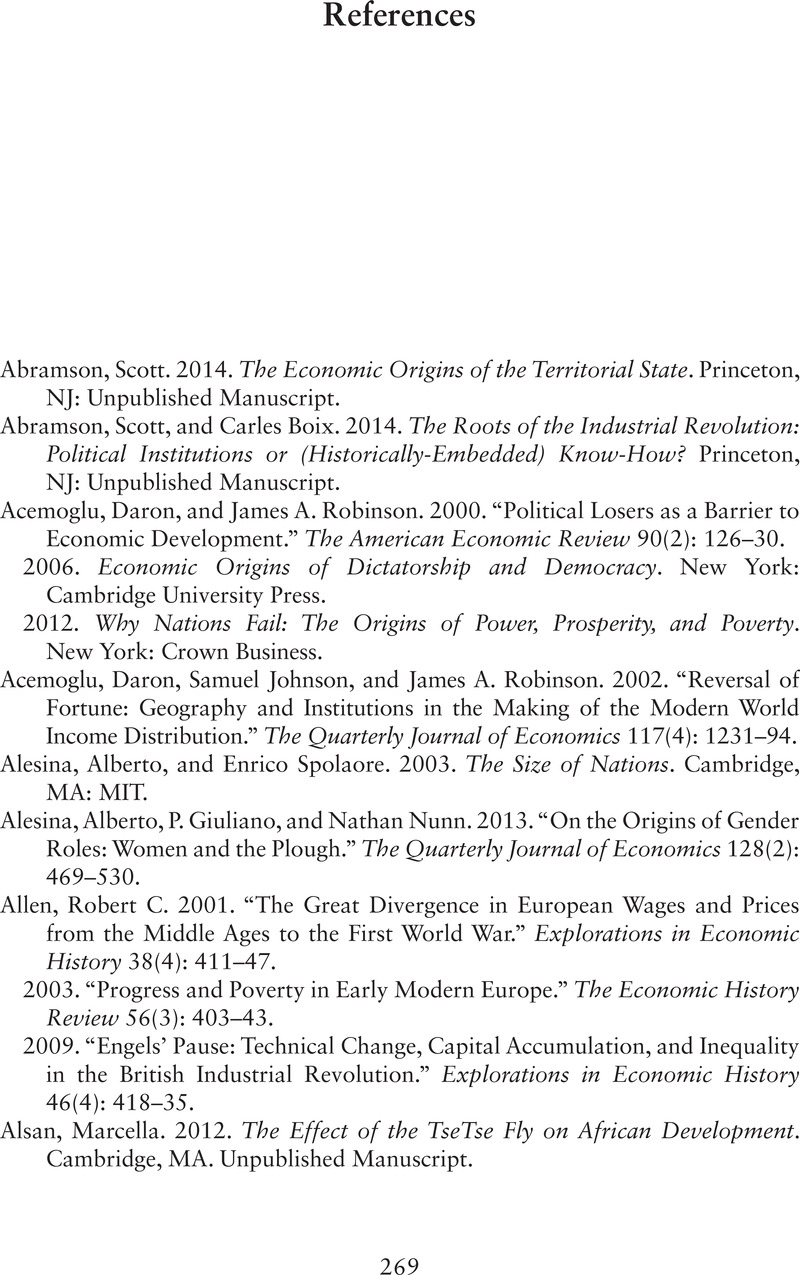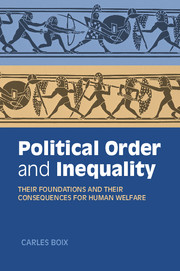References
Published online by Cambridge University Press: 05 March 2015
Summary

- Type
- Chapter
- Information
- Political Order and InequalityTheir Foundations and their Consequences for Human Welfare, pp. 269 - 294Publisher: Cambridge University PressPrint publication year: 2015



